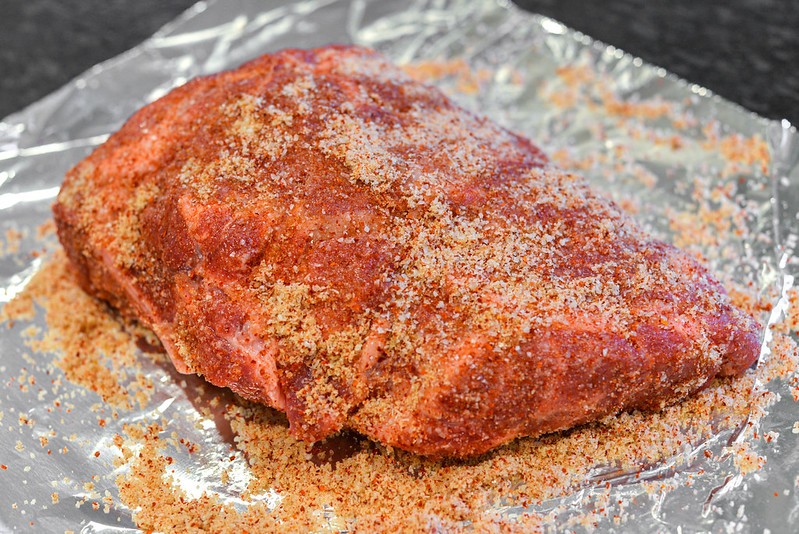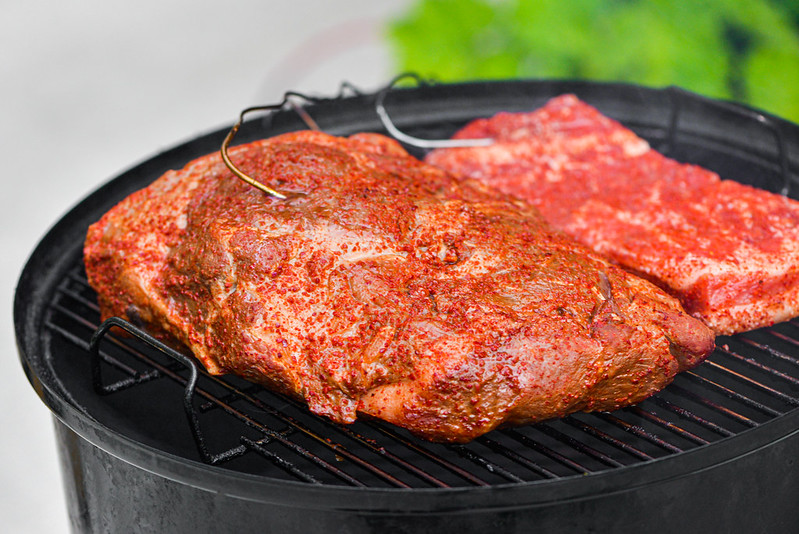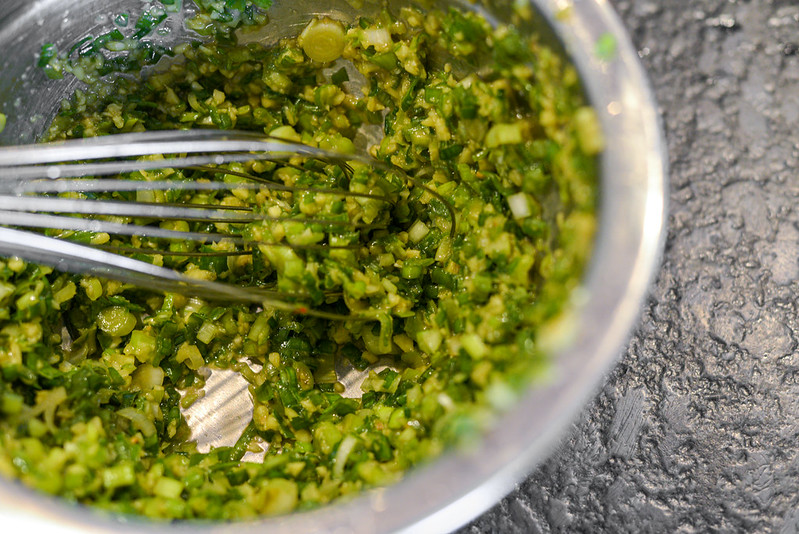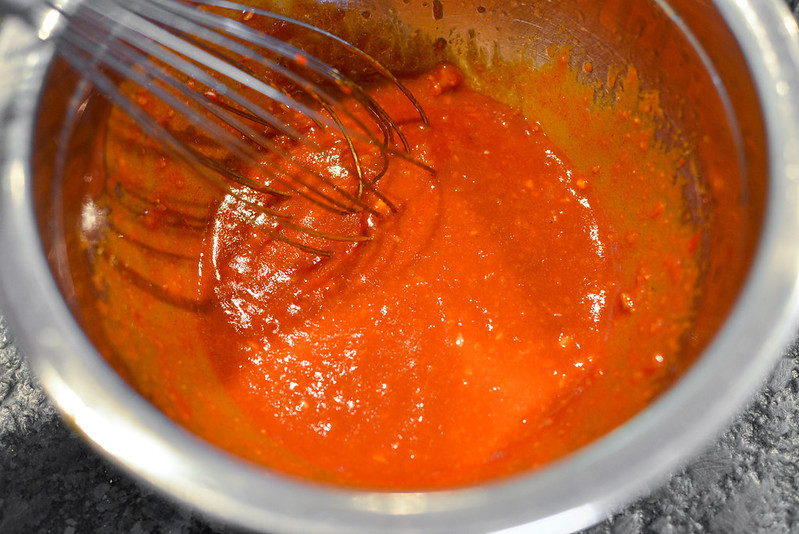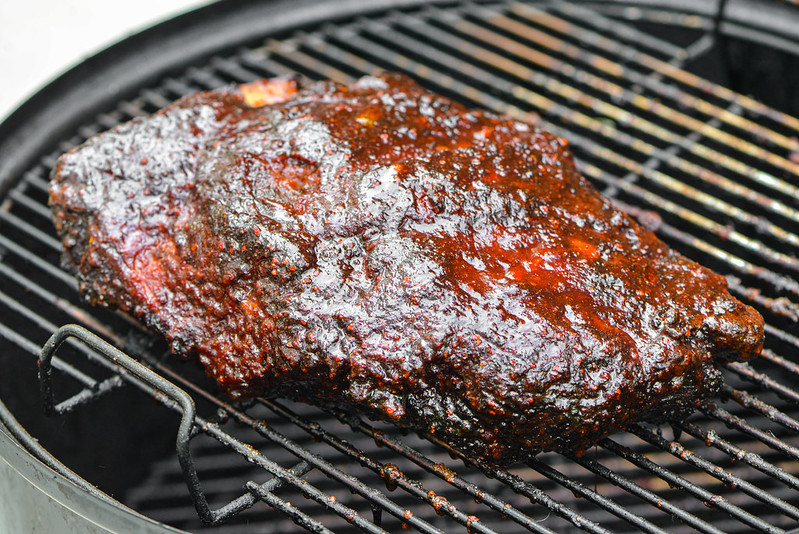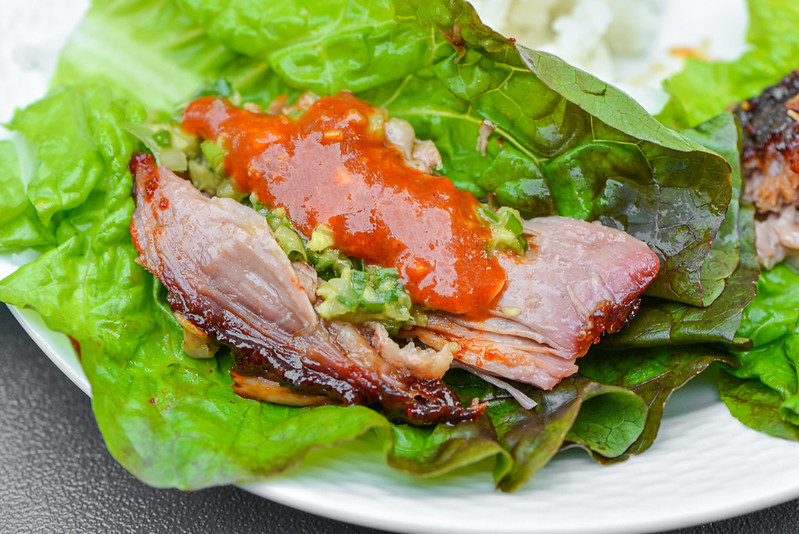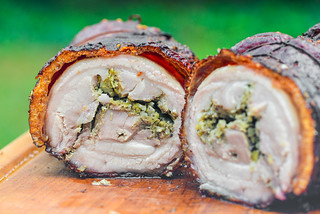Smoked Bo Ssam
I've never been one to jump on the bandwagon of the latest food fad, but as a content developer, that's not really a wise choice because I'm not delivering what people really want in the moment. This smoked bo ssam is a good case study in that—it's been many, many years since Momofuku's bo ssam was the big hit both in the New York food scene and then as a recipe online. I partook in eating and making that wonderful Korean-inspired pork shoulder recipe and it's graced multiple holiday tables of mine, but it's not until now, when it's no longer a hot commodity, that I chose to develop my own recipe for one. That doesn't mean this recipe isn't any less amazing and it does bring some new elements in the bo ssam mix that may just ignite some to take another look at it again, but the exposure will not be what it could have been if I decided to undertake this effort years ago.
The most traditional meat found in bo ssam recipes is boiled pork belly, but David Chang's recipe features a slow roasted pork shoulder with a crackling sugary crust that's served whole and pulled on demand at the table. This presentation makes it a really fun communal meal, and that, along with the fact that the recipe is also incredibly easy, it's easy to see why it became so popular. I wanted to keep that same feeling with my smoked bo ssam recipe, but I changed up the flavor profile a bit to bring in a barbecue influence along with heat to contrast the sweet. I began building that by using light brown sugar in the rub, which introduces a mild molasses flavor, along with using gochugaru (Korean chili powder) to add heat to go with the sweet and salty.
I also used this as a chance to make some changes to the base Momofuku bo ssam that didn't always work for my taste buds. That including cutting the amount of rub—I never used the full cup of sugar and cup of salt to coat a 7-pound pork shoulder. I still had a little rub left over after coating the butt liberally here, but that's ok because that makes the recipe still work for those who get a slightly bigger piece of pork than I had.
I kept in the overnight stint in the fridge once the rub is applied. This step aids with flavor and moisture development as the salt and sugar act as a brine, drawing moisture from the meat, which is then reabsorbed. The next morning I loaded the butt up into the smoker, which I ran at 250°F with a few chunks of hickory added to the coals.
With that low smoking temperature, I knew it was going to take about twelves for the meat to cook from start to finish, so that left ample time to assemble the sauces needed for the rest of the recipe and for serving. The first of those was a baste I planned on applying to the pork in the final hours of cooking. This is similar to the Big Bob Gibson pork shoulder recipe that has been a workhorse for me almost my entire cooking career. Like that baste, I used a vinegar foundation, but built up a sweet and spicy Korean influenced flavor profile with rice syrup and dark brown sugar for sweetness, gochujang and gochugaru for heat, and soy sauce for a savory touch.
Next was making a ginger scallion sauce, which has always been one of my favorite parts of the Momofuku recipe. The first time I tasted this I couldn't believed it was pretty much just scallions and ginger—it packed such a punch I was sure there had to be a lot more going on. There is vinegar, oil, and soy sauce in there, but they're all minimal compared to the two primary ingredients. The most major change I made here was just scaling back the amounts because I've had leftovers of this sauce at most of my bo ssam meals.
The last thing I made was the ssam sauce. The Momofuku version of this was never my favorite since I found it a little too thin and leaned heavily into the vinegar. When I serve Korean barbecue, I often just use ssamjang, a Korean fermented bean and chili paste, on its own and am left happy. That was the primary ingredient here, but I still brought in elements used in Momofuku version, just in lesser amounts with some modifications to result in a thicker sauce that had more of that ssamjang taste and a tad more heat.
After about eight hours of smoking, the pork's exterior had developed a nice bark that was dry and darkened, but not yet black. This is when I began applying the baste.
From then until the butt was done about four hours later, I brushed it with the baste roughly every hour.
By the end, that once dry bark now had a wonderful shiny quality to it with an attractive red hue. Large pieces of meat such as this benefit from a rest before serving, so once the roast hit my target internal temp of between 196—203°F, I transferred it to a plate and let it sit for 30 minutes before serving.
Then it was time to dig in and there's little quite as satisfying as that first grasp of the pork, pulling it with the tongs to uncover glistening and tender meat below the crusted surface.
Ssam translates to "wrapped," which is how this is meant to be enjoyed. The meat gets assembled into lettuce wraps that you can adorn with your favorite selection of kimchis, rice, and and the prepared sauces. While the bones of this bo ssam were built upon the well published Momofuku recipe, this one had a very different profile. That bark on the pork was layered with so much flavor it was insane. Like the inspirational recipe, there was a good sweetness and saltiness to it, but there was also an equal amount of heat that had the hallmark fermented flavor of gochujang as well as an underlying tanginess that, when paired with the smokiness of the meat, gave the dish a dash of American barbecue undertones. That exterior was so flavor packed that it was important to balance it out with enough interior meat in each wrap to prevent it from being overwhelming. When the mixture hit right—which was most of the time—this tasted really incredible and unique from any bo ssam experience I've had in the past, which I think gives good reason to try out this version even if you may be familiar with dish already or even already tired of it—I mean, it has been seven plus years since that Momofuku bo ssam was the hot new thing.


